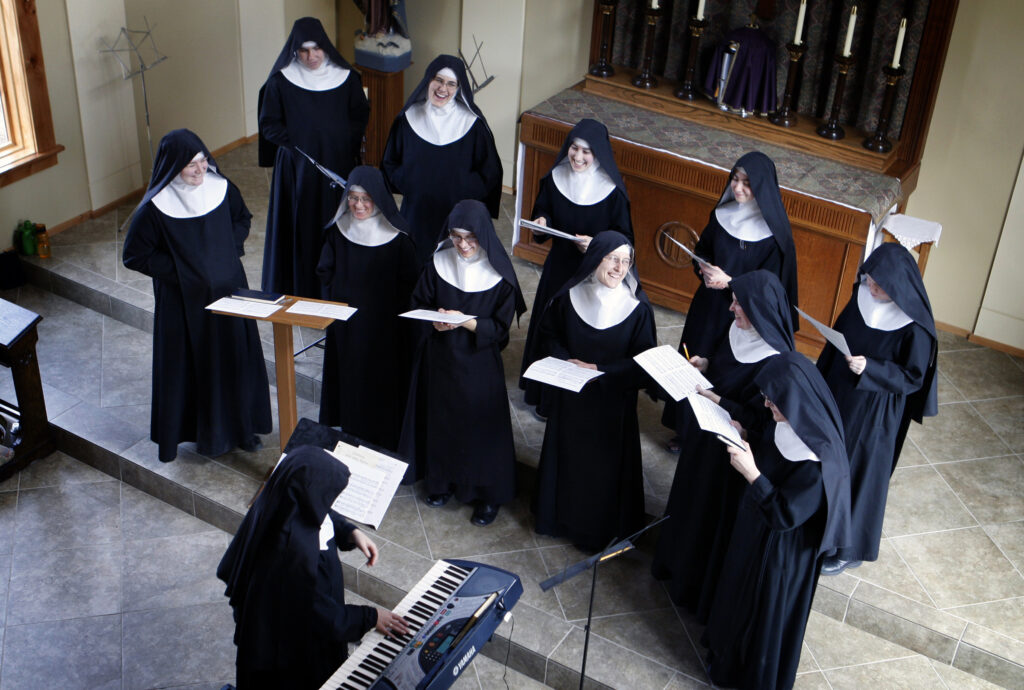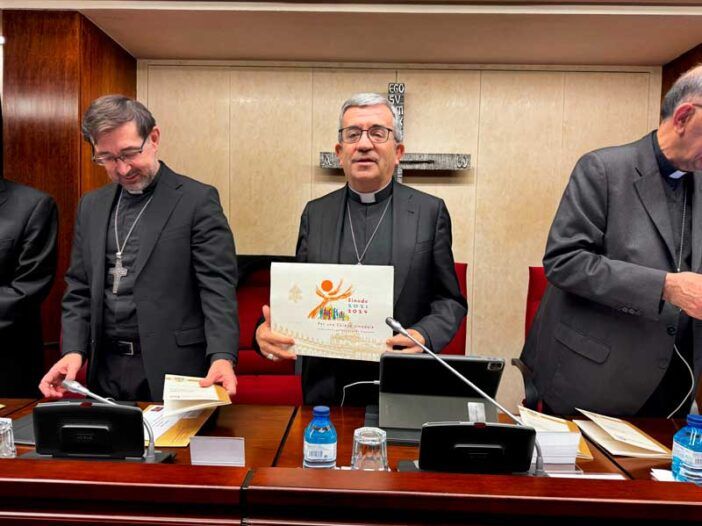Benedictines
Families of monastic orders dedicated to the contemplative life

The Nuns of the Order of Saint Benedict are a female Catholic religious order of monastic life and pontifical right.
They are part of the Order of Saint Benedict, but their monasteries are autonomous.
They consider Benedict of Nursia as their founder and its origins date back to the founding of the monastery of Montecasino (Italy), around the 6th century.
The nuns of this institute are known as Benedictine nuns, and they add the acronym O.S.B to their names.
HISTORY
Benedict of Nursia, according to Gregory the Great, founded near Montecasino at the beginning of the 6th century, a monastery for his sister Scholastica, the reason why the Benedictines consider Benedict of Nursia their founder, but the title of patron saint is reserved for Scholastica.
It is not known with certainty whether the female monasteries of the West, especially the English, followed the Rule of Saint Benedict, but Pope Boniface, with the reform of 492, insisted that all female monasteries adopt this rule.
These laws did not receive immediate reception, since the German and English monasteries were more a type of collegiate church of canonesses than true Benedictine nuns.
It has been claimed that before the 12th century, only the monastery of Saint Mary of Gandersheim in Lower Saxony can be considered the only truly Benedictine monastery in all of Germany. The other collegiate churches adopted regular life from that same century onwards.
Unlike male monasteries, with a congregational system, female monasteries were usually under the spiritual direction of a male abbey, or subject to the jurisdiction of the bishop of the diocese; cases like that of San Pedro de las Puellas, directly dependent on papal jurisdiction, were exceptional.
Until the mid-16th century, the Benedictine nuns did not follow a strict cloister: they were free to leave the monastery when they had to carry out a particular mission. This freedom of movement caused some scandals.
In the councils of Constance (1414), Basel (1431) and Trent (1545) it was regulated that, like the other contemplative orders, the Benedictines also observed a strict cloister.
The Protestant Reformation caused many of the order’s monasteries to disappear from England and other parts of central and northern Europe.
In France in the 17th and 18th centuries, there was a resurgence of female Benedictine foundations, which incorporated new reforms in conventual life and in the observance of the rule, such as Montmartre, Beauvais, Valle del Grâce and Douai, or the Benedictines of Perpetual Adoration, founded in Paris in 1654. However, the French Revolution put an end to these monasteries, until only some of them were reopened during the 19th century.
On July 12, 1823, Pope Leo XIII created the Benedictine Confederation, to which many of the congregations of Benedictine nuns belong.
ORGANIZATION
The Nuns of the Order of Saint Benedict are organized into autonomous monasteries with their own characteristics, directed by an abbess chosen by the nuns of each community.
The monasteries are grouped into federations, which in turn can form part of the Benedictine Confederation.
There are at least four ways to classify female Benedictine monasteries:
1. Monasteries incorporated or united to the respective male congregations, such as the: English, Brazilian, Solesmes, Olivetana, Beuronese, Sublabence, Vallombrosiana, Camalduense, Dutch, Annunciation and Vita et Pax congregations.
2. Autonomous congregations (i.e. without reference to a male branch) of Benedictine nuns: Congregation of Our Lady of Mount Calvary, Benedictines of Perpetual Adoration (formed by six federations), Nuns of the Immaculate Conception of Poland, Congregation of the King Eucharistic and the Celestine Benedictines.
3. Federations and unions of monasteries: in France, Nuns of the Most Pure Heart of Mary; in Germany, Union of Nuns of Bavaria, In Italy, Italian Federation North, Federation of Piceno, Federation of Tuscany and Federation of Umbria; and in Spain, the Castilian, Catalan, Galician and Pyrenean Federations.
4. Benedictine monasteries that have no legal relationship between them, some of diocesan law and others of pontifical law.
The Benedictines are nuns, cloistered religious who observe the Rule of Saint Benedict.
In addition to the celebration of the divine office, they dedicate themselves to manual and intellectual work, such as education, caring for the sick, agricultural tasks, restoration of objects and binding of books, organization of spiritual retreats, etc.
As in the case of the male branch, the motto is Ora et labora, “Pray and work.”
Related

“The priest finds his reason for being in the Eucharist”
Fundación CARF
01 April, 2025
5 min

Family Valued: An international appeal for the family
Exaudi Staff
01 April, 2025
2 min

Bishop Luis Argüello Addresses the Challenges of the Church in Spain
Exaudi Staff
01 April, 2025
2 min

THE WAY OF THE CROSS: Accompanying Jesus on the way to the Cross
Luis Herrera Campo
31 March, 2025
5 min
 (EN)
(EN)
 (ES)
(ES)
 (IT)
(IT)

